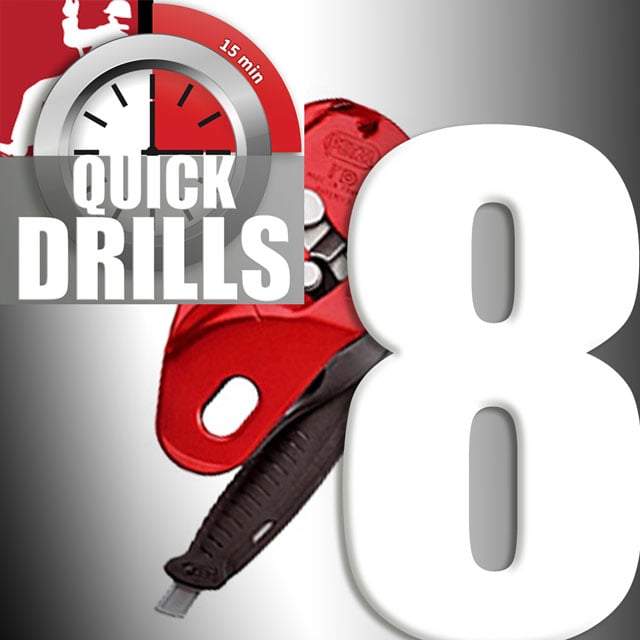Roco QUICK DRILL #8 - Petzl ID

Maintain Proficiency with Ground Station Drills
The Petzl ID is a great device. However, as with any device or technique, if you don’t practice, you risk forgetting some of the basic principles and functions involved in its proper use. Using quick and easy-to-set-up ground stations will help to keep proficiency levels up while reducing risk, logistics, and time required.Here are some drills and ground station ideas that will help the Petzl ID operator stay proficient. Keep in mind, these hands-on ground stations can often be applied to other devices and techniques as well – not every training session requires suspending rescuers!
Station Set-Up
Choose a solid anchor at ground level with about 10 feet of space to move and pull rope. This can be done in a classroom, apparatus bay or other area since the drill is about proficiency in using the ID and its different functions.
Taking-in Slack “TENSION”
Have the participant load and anchor the device as a lower. Pull at least 5-to-10 feet of slack out of the device and have participant pull the slack out of the system through the device as if setting a plumb point.
Have the operator stand in front of the ID, facing the anchor. Hold the two ends of the rope in front of the device and close together. This will prevent the safety cam from grabbing the rope while the participant strips rope on the standing end of the device (the 11 O’clock) to take-in (tension) slack.
Remember, taking in slack (tensioning) is also important when starting a Z-rig haul as the system may not automatically start stripping/cleaning the rope through the device if it should be locked. In this case, the load would not be captured and any progress gained would be lost or dropped if the haul team let go of the haul line. This may also occur initially with a 5:1 Z-rig, even if the device is unlocked, until the full load is on the system.
Giving-out Slack “SLACK”
To give out (or feed) slack, have the operator remain in the descent control position (behind the device). Keeping the device with the top or bottom plates facing the ground, simply use the left hand to turn the body of the ID perpendicular to the direction of the load travel as rope is pulled with the right hand from the 7 O’clock position of the ID. Simulate adjusting a plumb point or feeding slack once a lower is complete and the patient is on the ground.
Rappel Ground Exercise
Have participants anchor the rope for a rappel and attach the ID to the rope and their harnesses. Have them lean away from the anchor and walk backwards while using the device to control speed. Review hand and body positions and have operators pull the ID into panic mode and reset. Direct participants to let go of the rope in order to build confidence in the automatic braking of the device. Also, have them practice tensioning and feeding slack (adjusting rappel plumb point) while in the rappel mode.
This drill may seem too simple to be of any benefit, but how many of us have watched our teammate fumble with loading, or fumble while trying to adjust the tension or give slack on an anchored ID? The more hands-on time operating this device, the better! Practicing a technique at ground level will help rescuers be more proficient when they “live load” a system during training, or when performing a real rescue.
The Petzl ID Video
Review the features of the popular rescue tool with Roco Chief Dennis O'Connell.
Next in this series: QUICK DRILL #9 - Belay Systems





